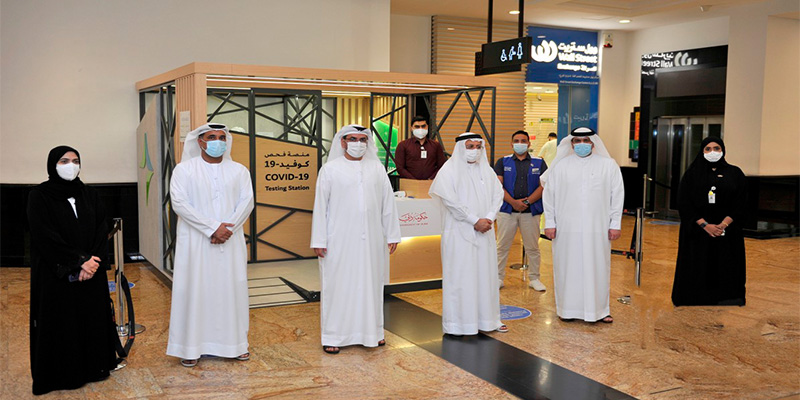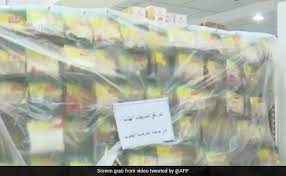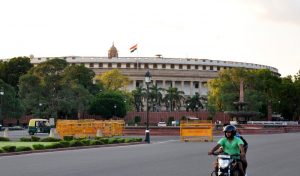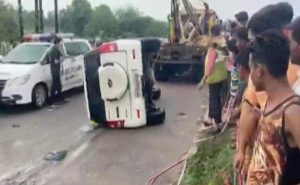This is the second part of a series of articles titled ‘A Savage Turn in India – China Relations’ on the India-China stand-off on the Line of Actual Control at Galwan valley by Major General Jacob Tharakan Chacko, Sena Medal (Retired).
The true account of what exactly happened will never be known because the people on both sides who were actually involved are dead. However, it is possible to logically reconstruct the sequence of events to what could have actually happened.
Consequent to the decision taken at the Lieutenant General meeting, the Chinese forces were to dismantle temporary structures they had put up and withdraw to a mutually agreed location in their area by June 15. It is believed that the Colonel along with his men had gone to the site to check if Chinese forces had vacated.
From information available, it is learnt that the Chinese had other plans. Prepared to create and perpetrate brutality, they got into an argument with the Indian officers. The argument predictably turned violent and the Chinese pounced upon the unsuspecting Indian Army personnel and battered them with primitive weapons they had already readied and kept. As the Indian troops came to know what befell their commanding officer they rushed to the spot. Meanwhile, the Chinese called for reinforcements. A hand-to-hand combat, the bloodiest in contemporary history between two armies, ensued. It is believed that the scuffle that started in the evening went on till late in the night and resulted in more than 60 fatal casualties, 20 on our side and more than 40 on Chinese side.
While India declared its losses officially and celebrated the martyrdom of its sublime soldiers, Chinese soldiers, having died for their country, continue to suffer the ignominy of being neglected and their service not even acknowledged by their thankless nation. China has yet not revealed figures of its dead and injured.
Why Didn’t Soldiers Fire?
The first question that comes to everybody’s mind on hearing this incident is, “Why didn’t soldiers fire at each other?”. After all, professional soldiers are trained to fire and not get into physical brawls with their adversaries. It may be chilling for the uninitiated but both sides steadfastly stuck to the script of the three bilateral military agreements that bans both sides from using firearms at the LAC. Ironic it may sound, but that is the fact. Even one-man firing one round from either side can immediately change the nature of conflict and escalate it beyond local control. While there are differing opinions about how that agreement should have been interpreted, the fact remains that firearms were not used. Use of machine guns, other armaments and artillery also is prohibited as per the agreement. It is in light of this agreement that two sides adopted physical means of overcoming each other.

Was it a well-planned Chinese Operation?
The scale of violence and the manner in which the incident played out clearly indicates that the Chinese had had planned and designed to precipitate this situation. They wanted to escalate the level of conflict for a purpose. They seem to have deliberately delayed dismantling of the temporary structures that they had put up knowing fully well that delays would be checked. They had already stockpiled the improvised weapons of torture at their location. They were present in large numbers and had kept reinforcements nearby. The Indians, on the other hand, seemed to have believed that the process is going as per the mutual agreement. They did not expect such a response. It was a replay of the 1962 treachery. It seems that the Chinese had decided to precipitate this incident to show that Indians were the aggressors and crossed over to their side and all that they did was in self-defence. They seemed to have been ignorant of the capabilities of Indian soldiers.

History of Conflicts
Bilateral relationship between India and China commenced post-Independence and has become increasingly complex with passage of time. While India had been championing progress through the creation of a friendly neighbourhood characterised by mutual trust and cooperation, China had its own plans. The first confrontation with China was in 1962. Lulled by the slogan ‘Hindi-Chini Bhai-Bhai’, India failed to read the motives behind various border incidents China initiated in the summer of 1962.

Unprepared for the Chinese offensive, Indian establishment was surprised when China declared war on October 20,1962 to “secure its western borders”. It culminated on November 21,1962 when the Chinese unilaterally declared ceasefire. It was a crushing and humiliating defeat for India. However, in 1967, India inflicted heavy casualties on the Chinese in the Battles of Nathu La and Cho La and came out a clear winner. Most Indians seem to be ignorant of this great victory and its heroes.
The next armed conflict was in 1975, when four Indian soldiers were killed at Tulung la in Arunachal Pradesh. There have been many other serious standoffs after that. But none of them had fatal casualties, until the Galwan Valley Combat of June 2020.
Operation Chequerboard 1987
Consequent to the review of National Security in 1980 and approval of the General Krishna Rao report by the Government, it was decided to establish defences at Hathung la to defend Tawang. Accordingly, infrastructural build up commenced in the area. In the summer of 1984 India established an observation post on the banks of Sumdorong Chu to be manned by the Special Security Bureau (SSB). In 1986, it was noticed that China was making permanent structures in the area. India objected. In 1986, India also granted statehood to Arunachal Pradesh, an area claimed by China. India also offered dialogue which China rejected. It was perceived that China would move troops into the area. To pre-empt any such move, General K. Sunderji ordered Op Chequerboard in 1987 and India landed a brigade and occupied Hathung la. China moved up its forces and the LAC saw face-to-face deployment. India had effectively seized the initiative and surprised China. Diplomatic efforts thereafter de-escalated the faceoff. China backed off.

The huge mobilisation, deployment and demonstration of the will to stand up against China forced the Chinese to the negotiating table. A series of bilateral diplomatic interactions ensued. The famous agreements of 1993 and 1996 came out as a result of the Indian resolve.
Incursions Post 1996 Agreement
A research paper titled “Understanding Sino Indian border issues: An analysis of incidents reported in the Indian media”, authored by Mihir Bhonsale, published on February 20, 2018, puts the number of unique border incidents between 2003 and 2014 at 30. But most of them were not serious and were handled locally. But a few flared up and required intervention at the highest levels. The most prominent ones are ‘DBO Standoff – 2013’, ‘Demchok standoff-2014’, ‘Doklam standoff 2017’ and a series of standoffs in 2020 culminating in Galwan.
The incursion near Daulat Beg Oldi started with PLA intruding 20km into the Indian territory and setting up camp by erecting tents to the South of Daulat Beg Oldi (DBO) on April 15, 2013. India objected to this, moved in its troops and refused to move out till Chinese moved back. China gave up and moved out on May 5, 2013.
The 16-day standoff at Demchok in Chumar started on September 10, 2014 with India spotting construction of a road by Chinese from Chepzi to Chumar. India objected and moved its forces and camped opposite the Chinese. This continued even while President Xi Jiping was visiting India. After hectic diplomatic parleys that culminated in the meeting between two external affairs ministers in New York on September 26, 2014, the Chinese withdrew to their pre-September position.

The Doklam standoff between June 16 and August 28, 2017, with visuals of soldiers jostling shoving and kicking each other, is still fresh in public memory. Trouble started when China started the construction of a road in a disputed area between Bhutan and China. Bhutan requested India to intervene. The Indian Army arrived and took up position. The two sides got physical. There were injuries but no fatalities. As a result of hectic diplomatic efforts, Chinese troops went to the pre-June position after a tense 70-day eyeball-to-eyeball deployment. According to the information given to Parliament by the government, there were 273 transgressions in 2016, 426 in 2017 and 326 in 2018 by the PLA along the LAC. In 2019, both sides got into a confrontation at Pangang Tso which was diffused quickly.
On the intervening night of May 5 – 6, 2020, Indian and Chinese soldiers got into a scuffle on the north bank of Pangang Tso and on May 9, 2020 at Naku la along the Sikkim-Tibet border, again resulting in injuries. But tensions were diffused and forces disengaged quickly. On June 15, 2020, Galwan valley erupted in violence.
Despite, growing economic, diplomatic and cultural ties over decades, it was becoming clear that China was becoming belligerent at the LAC. Many areas remain disputed due to contesting claims of ownership, even today. While India is clear and unwavering in its perception of the LAC, China has not agreed to freeze, at least what they feel is the LAC. Presumably, it suits china to keep the LAC simmering, to exert pressure on India for some or the other political or diplomatic purposes. They have made it a practice to claim some Indian territory and activate the LAC periodically. These standoffs had become routine and inflicted no casualties on either side.
But something changed and Chinese had decided to alter the situation.
To be continued
Major General Jacob Tharakan Chacko, Sena Medal (Retired) is an author, blogger, facilitator, freelance management consultant, organisational synergiser, trainer and NLP practitioner. He regularly contributes to newspapers and writes extensively on management issues in his blog.































